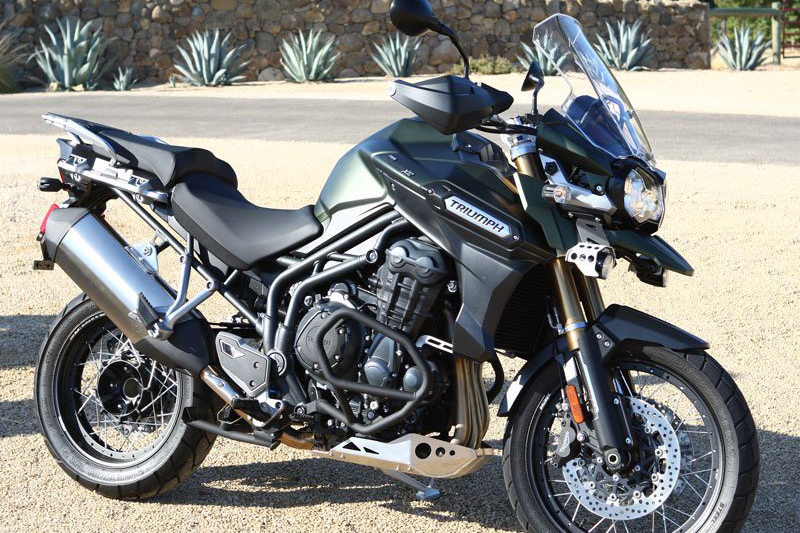2013 Triumph Tiger Explorer XC

First Ride Review
When Triumph introduced its Tiger 800 and 800XC for 2011 and Tiger Explorer for 2012, the British manufacturer clearly wanted a slice of the rapidly growing adventure-touring market, with its sights set primarily on BMW’s popular GS line. The Tiger 800/XC compete head-to-head with the BMW F 650 GS and F 800 GS, respectively, and the Tiger Explorer competes with the BMW R 1200 GS, as well as other big-bore adventure bikes such as the Ducati Multistrada 1200, KTM 990/1190 Adventure and Yamaha Super Ténéré.
The XC designation on the Tiger 800XC refers to “cross country,” and it departs from its standard-model sibling with beefier, longer-travel suspension, a larger-diameter front wheel (21 vs. 19 inches), spoked instead of cast wheels, more dirt-oriented tires and guards to protect the radiator and handgrips. When the Tiger Explorer was first released last year, an XC model wasn’t in the picture. But given the popularity of rugged accessorized models such as BMW’s R 1200 GS Adventure, it was only a matter of time, with Triumph introducing the Explorer XC just a year later.
Instead of the base model’s cast wheels, the Tiger Explorer XC has Saxess-made aluminum wheels laced with steel spokes that run tubeless tires, similar to the setup found on the Yamaha Super Ténéré. Wheels on both the base and XC models are shod with Metzeler Tourance EXP tires, which are designed for 95-/5-percent on-/off-road use. To protect the XC from damage, it has plastic hand guards, engine guards made of 22mm-diameter steel tubing and a skid plate made of 3mm-thick aluminum. Fog lights with 55-watt halogen bulbs and aluminum protective cages boost illumination, and the bodywork is painted a special matte Khaki Green.
At $17,199, the XC costs $1,500 more than the standard Tiger Explorer. Most of the accessories can be purchased from Triumph’s P&A catalog for a few pennies below $910, so in effect you get the stylin’ mil-spec paint job and trick Saxess wheels for just $590—a sweet deal.
Although better protected from abuse, the Explorer XC is hardly more dirt-oriented than the standard model. It doesn’t have more suspension travel or a larger front wheel, and it remains a heavy (601 pounds fully fueled—16 pounds more than the standard model) adventure tourer that’s best suited for pavement or the occasional smooth gravel road. On the street, it excels. The Explorer’s liquid-cooled, 1,215cc in-line triple cranked out 118.5 horsepower and 78.5 lb-ft of torque on the dyno during our 2012 test, and its broad spread of torque provides brisk acceleration whenever you need it. The throttle-by-wire is a tad sensitive and vague, but a little adaptation makes the bike easy to live with.
With standard amenities like ABS and traction control (both of which can be turned off), cruise control, adjustable ergonomics, high-quality suspension and brakes, and 950-watt charging output, the Tiger Explorer is a great touring bike. Think of it as a tall sport tourer, ready to shred the pavement with every twist of its tail. And in XC guise, it has many of the look-the-part accessories adventure riders want along with a really cool paint job.
